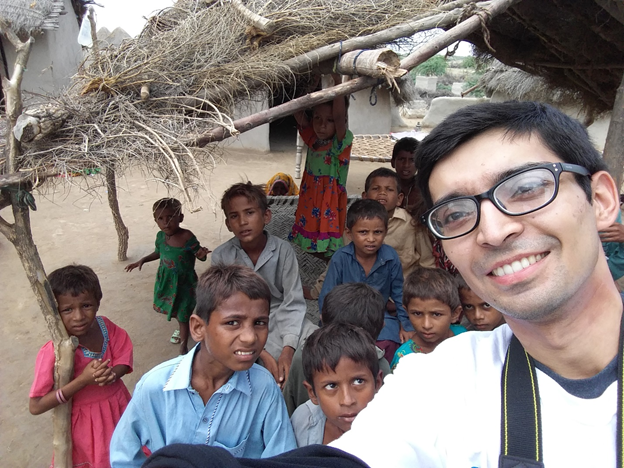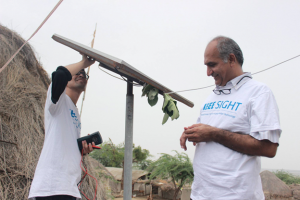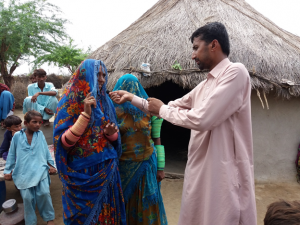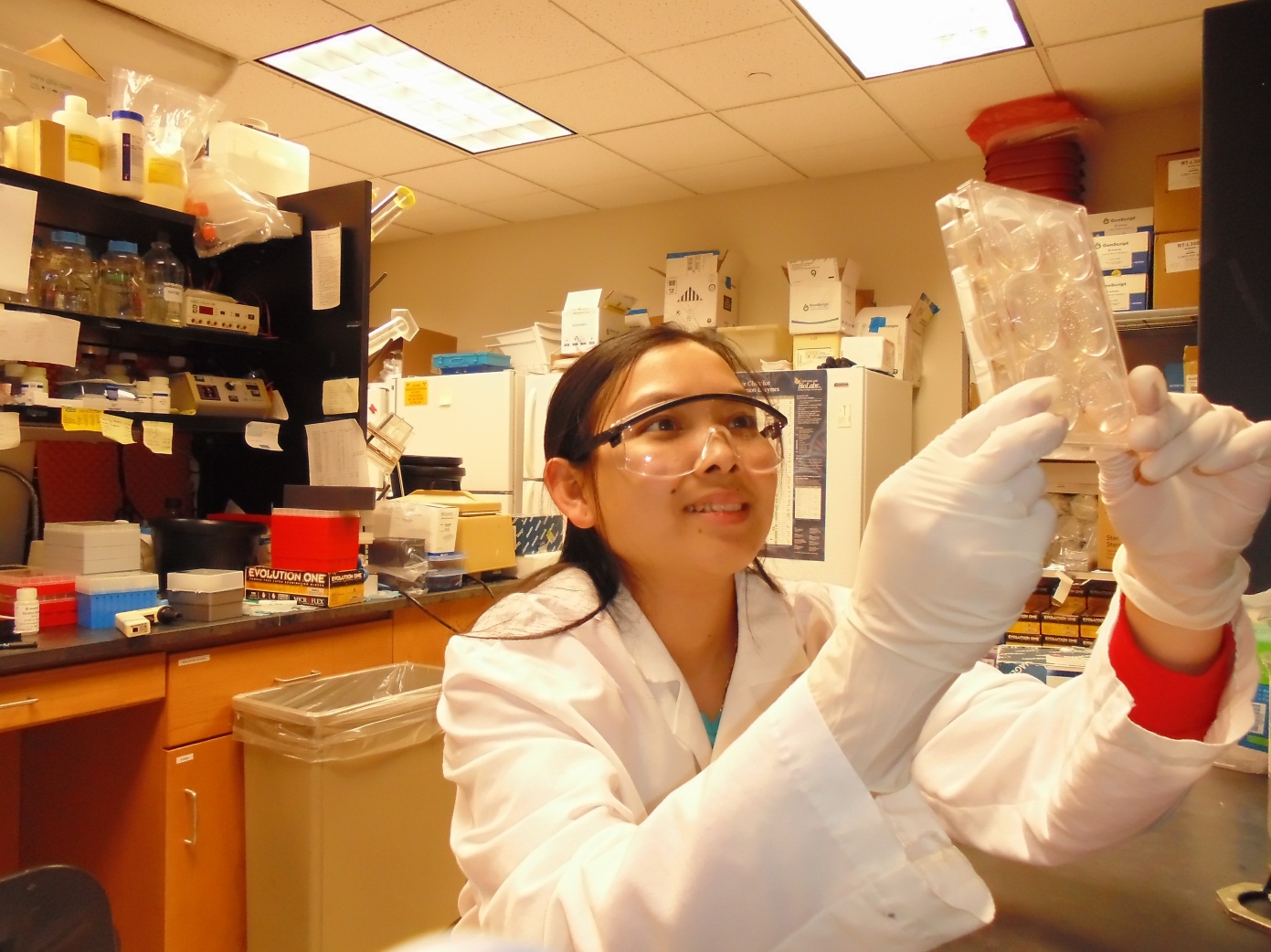
Hassaan Idrees, 2014-2016, Pakistan (right) taking a selfie with kids from the village of Revi ji Dhani, excited to see lightbulbs which will allow them to play and study until late in the evenings.
Hema, an eight-year-old girl, is one of five siblings living in the village of Revi ji Dhani, located close to the Mirpurkhas-Umerkot highway, a perennially drought-ridden area in Pakistan. Every day, she wakes up before the crack of dawn to fetch water from a hand pump at a distance of two miles. It is a winding, nasty route that she has to maneuver in the dark, for there are no streetlights, and snakes and wild dogs run amok in the desert bushes. Panting and sweating on her return, she has to get ready to go to a dilapidated public school situated a mile away. Hema has trouble finishing her homework under the grim gaslight at home: it’s inadequate, expensive, and dangerous. As her father runs a small store in the village, however, she is one of the fortunate few to actually attend school; the vast majority of children in Revi ji Dhani have to assist their families with herding cows or woodcutting to make ends meet.
Hema belongs to an unbelievably impoverished community: more than 46% of people in the Umerkot district, with a population of more than 700,000, live with less than $1.90 a day. Rural female literacy is less than 10% in this district. Access to the grid is limited to the main town and larger villages, and still suffers from daily blackouts. Smaller villages and hamlets have power outages for as long as 18 hours a day or are not connected to the grid at all. With little or no power, the local economy suffers, and life is tough.
Fulbright alumni make positive differences in their communities around the world in areas as diverse and impactful as access to clean water and energy, agriculture and food security, education, health, and women’s empowerment. Completing my master’s degree on a Fulbright in electrical engineering, specializing in power systems from Arizona State University (ASU) in the summer of 2016, I vowed to do my part in solving Pakistan’s perennial energy crisis.

Hassaan Idrees, 2014-2016, Pakistan (left) and Parkash Lohana (right), testing one of the solar photovoltaic (PV) panels in the village. Installation work was done by the villagers themselves, who were enthusiastic to see light in their homes without the use of gaslights and cook stoves.
Upon my return from the United States, I was hired by an electric utility company in southern Pakistan, where I am currently working as an Assistant Manager in energy efficiency, demand side management, and integration of renewable electrical energy systems. Additionally, I initiated a solar home systems project in the rural villages of Sindh province.
Without access to electricity, critical basic services such as clean water, sanitation, and education are elusive in Pakistan. The geography and the economy of Sindh province revolve around the Indus River that flows through its heartland until reaching the Arabian Sea. Communities living in the Umerkot and Tharparkar districts of Sindh are far from the river, and experience arid weather with desert landscapes.

Village women in Revi ji Dhani were shy, and after asking for their permission, they were asked how they thought the solar project would help them. The woman pictured above, Shama, was very grateful and said it really helped them when cooking at night, and with sewing clothes and selling items — an economic activity that would empower them overall.
To establish a point of contact in this area for small-scale yet meaningful development projects, I utilized the 2016 Fulbright Alumni conference in Islamabad to initiate collaboration with a local NGO operating in Sindh for more than 14 years — the Association for Water, Applied Education, and Renewable Energy (AWARE) — working with the local government and aid agencies to solve problems at micro level. By putting together a team of volunteers in Karachi, we conducted site assessment visits to identify where we could use our skills to benefit the underserved communities in a human centered design. This led to the start of a project to deliver access to energy with technical guidance from Dr. Ray Larsen of Stanford University, Dr. Nate Johnson of ASU, and a number of other patrons from ASU and the Institute of Electrical and Electronics Engineers (IEEE) Smart Village. By early 2017, survey results were compiled, technical designs were evaluated, and a comprehensive plan was shared with the IEEE Special Interest Group on Humanitarian Technology (SIGHT) committee for approval. Within a few months I received funding, and this summer we are installing solar home systems that can light up Hema’s home and her friends’ to help them study in the evenings and make her early morning walks safe from wild animals.
This story was originally published by the author on Medium: https://medium.com/@hidrees_52233/solar-power-lighting-pakistan-one-village-at-a-time-cbd0a002294c


2 Comments
Great Work …keep It up and also say Thanks to Fulbright Program.
That they make more talent our Youngsters
Me Nasir Hussain from Peshawar .I also want to study in Us…..
Thanks, Nasir! It was a privilege for me to serve the community!
There are a number of scholarships which can help you study in the U.S. You can find their details on the website http://www.usefpakistan.org/.
Good luck!